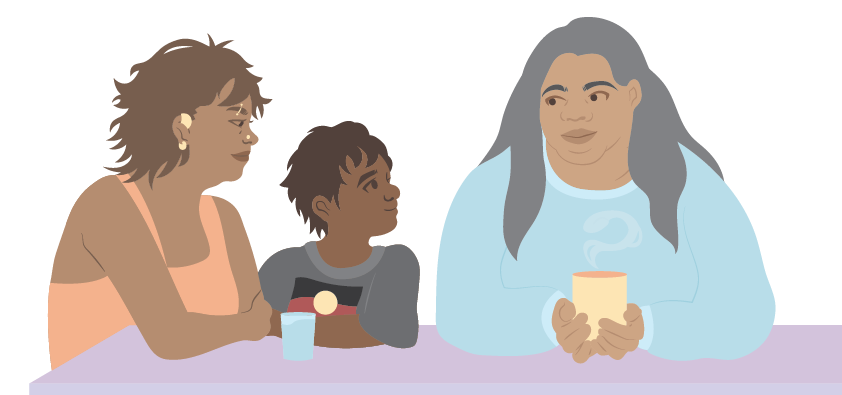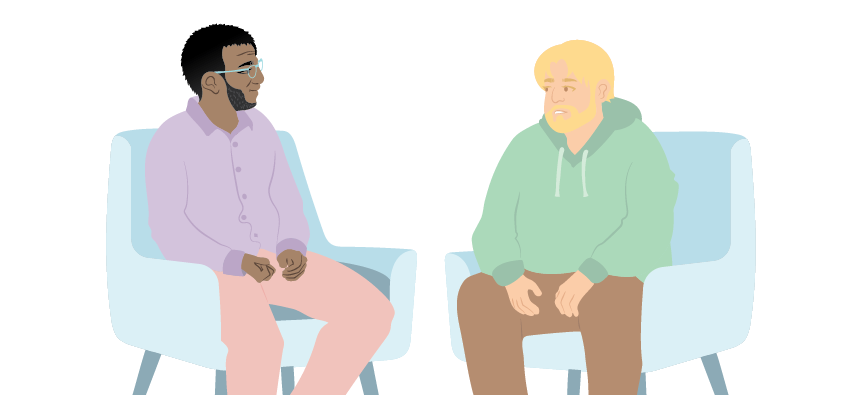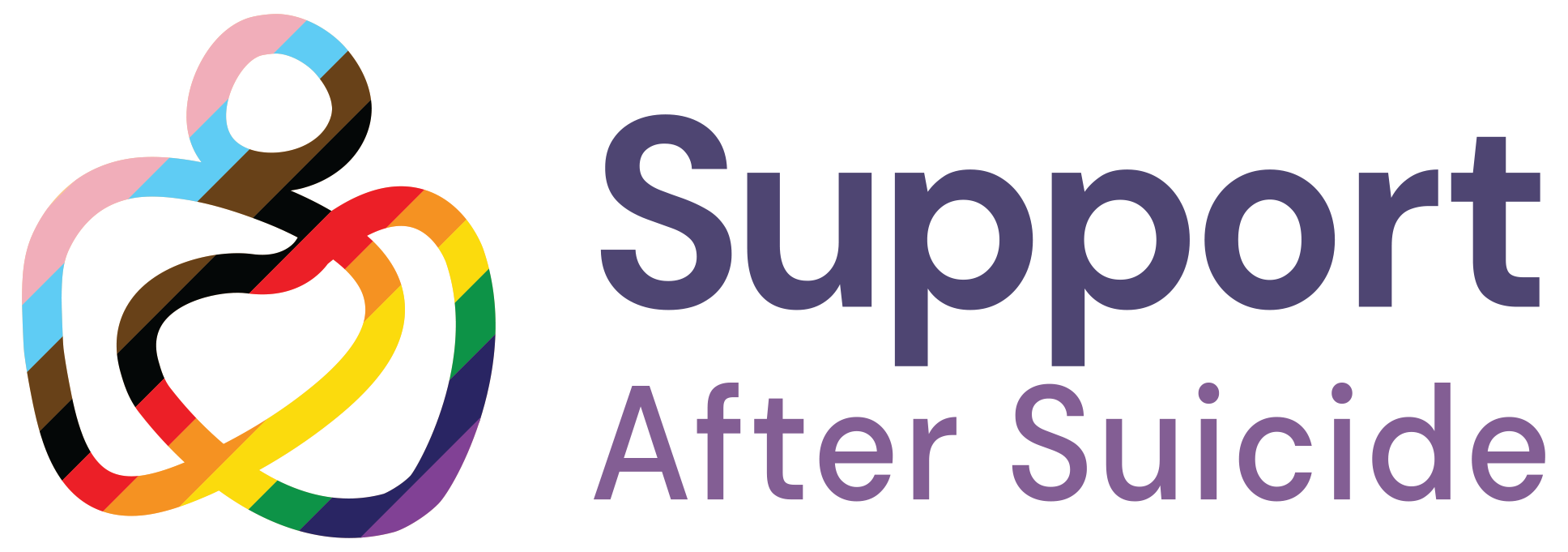
The flow of grief
Learning how to grieve the loss of someone to suicide takes time. At first, you might think that you’ll never recover or feel like yourself again. It is common, even when you begin to feel better, to experience times that are more difficult again. A birthday, hearing a song, or visiting a place can bring about a fresh wave of grief. These times may feel like setbacks, but it’s good to remember that this is the flow of grief, and these feelings are a natural and normal response. Over time, you can learn what is helpful to you and gradually life can begin to feel more manageable and less overwhelming. This page has some starting points for working out what may feel helpful for you.
Immediate practicalities
If you are the next-of-kin, you could be involved in some of the practical and formal arrangements. This could include contact with coronial services and police as well as arranging a funeral service or memorial. Interacting with these services may feel overwhelming or upsetting. It’s important to think about who can assist you with some of the tasks such as notifying friends, family, and others in the community.
Connection
You may find it comforting to be with people who understand and care about you. You may also find that you need time to be alone and reflect. It is important to do what you need to do. We know that over time, having a support network can help people cope better. Some people will not be able to handle the intensity of your grief, which can feel isolating. Support can be found in friends, family, and community members who are able to understand and sit with your grief. If you would like to expand your support network, we have some suggestions below for connecting with people who understand:
- connect with other LGBTQIA+ people bereaved by suicide on the SASH forum
- find information about free support groups, counselling, and other services in Resources
- if you have people in your life who may benefit from information on supporting LGBTQIA+ people bereaved by suicide, check out Supporting Someone
LGBTQIA+ people often find solace in connecting with each other due to a shared understanding of the impacts of stigma, prejudice, and shame on our communities. We know that hearing stories from peers helps many LGBTQIA+ people feel connected in their grief. To hear the stories of other LGBTQIA+ people bereaved by suicide, check out Real Stories.

Things to do
Sometimes it can feel almost impossible to know what to do, especially in the early days. It’s okay to try something and not find it helpful in that moment. What works at one point in time may not work in another. It’s a good idea to have some patience and be gentle with yourself while you’re navigating your grief.
Below are some suggestions of activities to engage in to distract yourself, ground yourself, care for yourself, or be cared for by others.
Distracting activities
- watch a ‘comfort’ TV show or movie. You may find some shows that you previously liked don’t work for you, but others are engaging enough to be distracting
- read a light book if you have the concentration
- listen to some music or a podcast
- spend time engaging in hobbies or do a puzzle or jigsaw
Grounding activities
- spend time in nature
- spend time alone to think, remember, pray, meditate, mourn
- spend time connecting with yourself spiritually
- in stressful or anxious moments, try common grounding exercises such as square breathing or 5 senses exercise
- if it feels comfortable for you, you may consider a meditation, breath-work, or mindfulness practice. transomatics is a trans-informed breath-work and movement guide for trans and gender diverse people
Connecting with bereavement
- visit a place where you feel connected to the person who has died
- create a memorial memory box, journal, photo album, or plant a tree. This can be done alone or in collaboration with others
- make art about your bereavement
- when you are ready, engage in content about suicide bereavement, this could be podcasts, books, written stories, videos, interviews, forums, or other content
- write letters to the person you lost as a way of expressing your feelings. You may wish to keep these somewhere safe or scatter pieces somewhere significant
- talk to the person you have lost, tell them about what they mean to you, update them on your life, seek their advice
- then you are ready, rearrange and store the person’s belongings. For some bereaved people, it can feel helpful to have someone with you when doing this
- remember the person through the things they enjoyed, such as cooking their favourite meal or singing along to their favourite song
Self-care
- only do what is essential, prioritise daily tasks and take it one day at a time
- use voicemail to screen calls and choose who you feel up to talking to
- practice self-compassion and self-gratitude. This can look like granting ourselves the patience, kindness, and recognition we would give a friend who were in our situation. Taking care of ourselves is not easy especially when we are grieving
- engage in sensory modulation activities to self soothe the body
- try to maintain a regular routine for waking up and going to bed, and limit screen time before bed
- try to eat a balanced diet for energy, body, and brain function. You may not feel like eating in the early days, but it is important to keep up the nutrition. Eating small, low-effort meals several times a day may be more manageable
- we may have financial or other constraints that impact our access to food and nutrition. It is always okay to ask for help accessing or preparing food, especially while we are grieving. We could consider sourcing help from friends, family, community, and organisations, such as the Ask Izzy directory
- try to engage in some form of daily movement such as a short walk or light stretching. Exercise does not need to be strenuous to help regulate energy levels
Community care
- spend time with people you are comfortable being authentic with
- develop a resource list, phone numbers of people and places to contact at times you feel you need more support
- birthdays, anniversaries, and other special occasions can be difficult times. You may want to engage in an activity that honours the life of the person who has died. For more information, see Support After Suicide’s page on managing special occasions
- access counselling
- attend a peer support group
- engage in a peer support forum
- speak with a helpline
- spend time with a pet
For information about available peer and counselling support, see our Resources.
Creating a Support Plan
Some bereaved people find it helpful to have a support plan for moments where we may feel distressed or overwhelmed. A support plan can be about recognising what works for us in these moments, then writing it down, so we have something to refer back to. The SASH Support Plan can be used as a template for creating your own plan.
